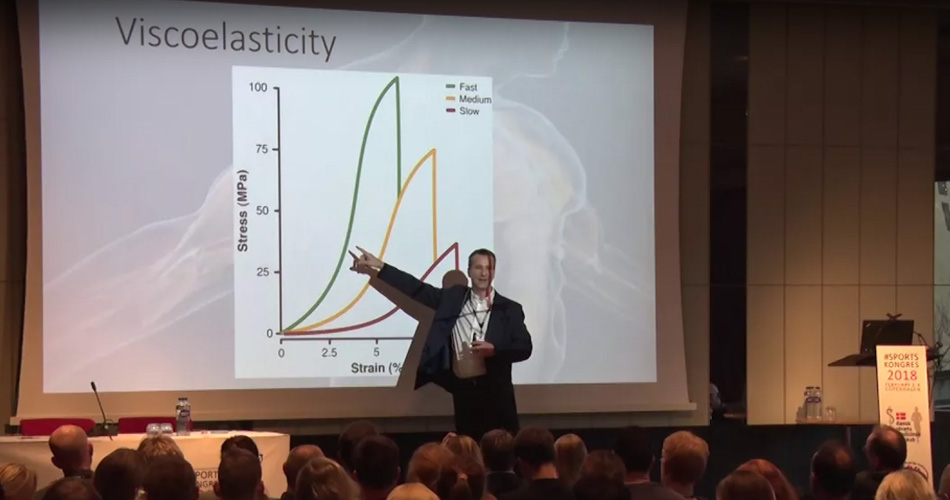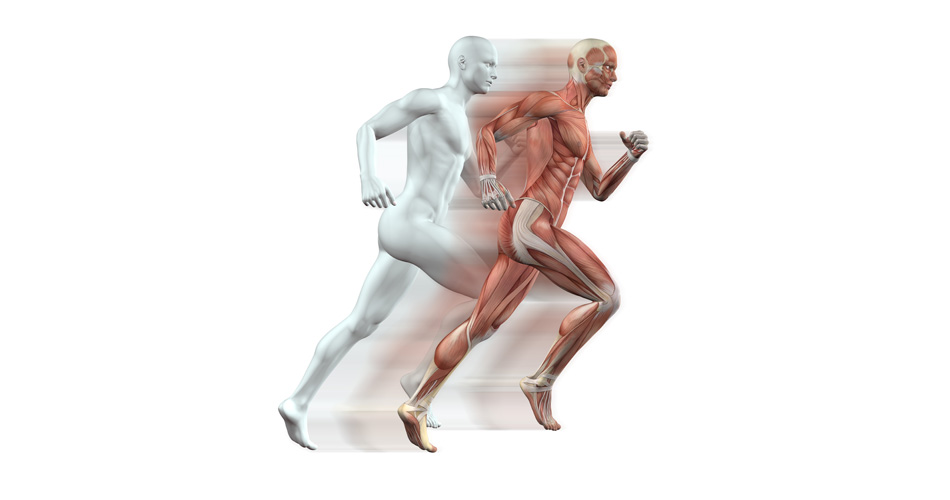Review 7 – Muscle & Tendon
What’s up everybody. This is Dan with this month’s rant about how to better decipher research.
Today we gonna look at this great cross-sectional study by Jeff McBride, where he assessed how much muscles and tendons contribute to different vertical jump tasks and their relative impact between high and low performers. This whole analysis was narrowed down to only the ankle joint and therefore only the muscle and tendon mechanics of the calf complex were evaluated. What I wanna emphasize here and highlight when we talk over the results later, that the calf complex has probably the biggest proportion of tendon-or any other passive tissue-to-muscle volume. I picked this study because I feel there is big emphasis and certainty almost arrogant certainty about the importance of the tendon or fascia or any elastic capacities (whatever that means) and its impact on human performance amongst certain online coaches…But as the title already reveals Muscle Actuators, Not Springs, Drive Maximal Effort Human Locomotor Performance…just beautiful.
So, what was done? 24 recreationally active participants were allocated into an above and an under average hop height group. So low hop height and high hop height. But let’s first have a look at the vertical jump task before discussing anything else. So, again, the analysis was limited to the one single ankle joint, and participants were strapped into an inclined carriage attached to rails with their knees completely fixed and immobilized. The non-tested leg remained relaxed and flexed. The 3 vertical jump tasks were a countermovement hop – so you start on your tiptoes and then it’s basically a single leg CMJ. The other 2 tasks were single-leg drop jumps from a 10 and 50cm drop height. External kinematics and kinetics were captured with a force plate and a 3D camera system to then calculate joint kinetics. Muscle-Tendon dynamics were determined via the length change of both tissues with respect to each other. The dependent variables were work – so force * displacement – at the muscle, tendon, and joint level. Further active and passive muscle work was modeled. A very sophisticated approach here.
So, what was found? First of all, lower hoppers and higher hoppers had a big difference in jump height for all jumps. While the average hop height, that determined in which group each participant got allocated to, doesn’t look much at first glance…just 5 cm, in relative terms it’s more than 50% difference. Huge. So, what differed on the tissue level between those two groups? Not really any differences in the eccentric phase, and also nothing big going on on the tendon level in either phase or net tendon work. However, huge differences in concentric muscle work, which translated to significant differences in net muscle work. Again, tendon nope – trivial differences at best between good and poor jumpers, but muscle work showed big differences between the two. OOOFT.
Let’s skip that one because I struggle to read that, but this one is cool. Here we can see the difference or relative contribution in tendon, passive and active muscle work. What does it say, basically, if you suck at jumping, you rely more on your tendons and passive structures, whereas if you perform well, your active muscle work dominates.
So, what does it mean? Humans clearly use a predominance of active muscle contractility to enhance a single maximal effort performance. Active muscle work made up the largest component of the total work and correlated the highest with the resulting performance. Or in other words, the tendon is the slave to the muscle. If you can’t produce high levels of muscular force, you will suck as an athlete. I have no idea where this tendon-fascia-elasticity hype is coming from other than an inherent inability to challenge one own’s confirmation bias. Of course, we must be cautious to extrapolate this to multi-joint movements such as sprinting or cutting. But not getting stronger is never an option.
Thanks for listening. Always stay critical.











Responses